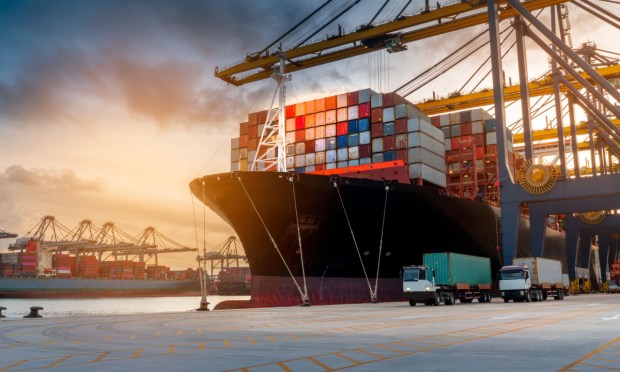
Container shipping rates have reportedly experienced a significant decline due to a decrease in consumer demand for goods, particularly in the ocean freight industry.
This decline has posed challenges for ship operators as voyages become unprofitable at current rates, The Wall Street Journal (WSJ) reported Monday (Oct. 9). Daily market prices for cargo transportation from Asia to the United States and Europe have dropped by as much as 90% since early 2022.
The largest container carriers have responded to this decline by canceling sailings, primarily on the route from Chinese ports to the U.S. West Coast, the report said. This trend is expected to continue following the Golden Week holiday in China, during which manufacturing sites are idled. Additionally, ship operators are mothballing vessels to reduce operating costs, resulting in a 7% reduction in container capacity in September compared to the previous year.
While ship operators face challenges, the decline in shipping rates benefits shipping clients, particularly large retailers, per the report. These retailers faced steep price increases for ocean freight transportation and capacity restrictions during the pandemic.
The decline in shipping rates and weak demand for goods is also evident in other modes of freight transportation, according to the report. Wholesale inventories have been decreasing in recent months but remain above pre-pandemic levels, indicating that orders for goods may remain depressed for some time.
As spot market rates collapse, large retailers with long-term shipping contracts have seen a decline in ocean-shipping expenses this year, the report said. However, negotiations between carriers and shippers over rates have become more frequent and contentious.
Looking ahead, the shipping industry faces additional challenges as more box ships are set to be delivered over the next year, per the report. Fleet capacity is expected to increase while container trade demand falls, potentially leading to further downward pressure on rates. Liners are reviewing capacity management strategies, including aggressive demolition of older vessels, long-term blanked sailings, and delaying new buildings to adapt to the distressed market.
One large container carrier, Danish shipping giant Maersk, reported on Aug. 4 that the decline in global demand for the shipping of containers by sea caused its revenue to decline by 40% year-on-year.
Maersk CEO Vincent Clerc said at the time that customers have been reducing their inventory and there is no sign of this destocking coming to an end anytime soon. Clerc said: “Our case is not for a recession, but it is for a really subdued environment that will continue for the rest of this year.”
Five months earlier, in February, online freight shipping marketplace and platform Freightos said air and ocean volumes were pressured, resulting in a slowdown in bookings across the platform.
“To a large extent this massive adjustment is simply a reversion to pre-pandemic prices and volumes, but it still represents a dramatic drop in price levels and a drop in volume too,” Freightos CEO Zvi Schreiber said at the time.